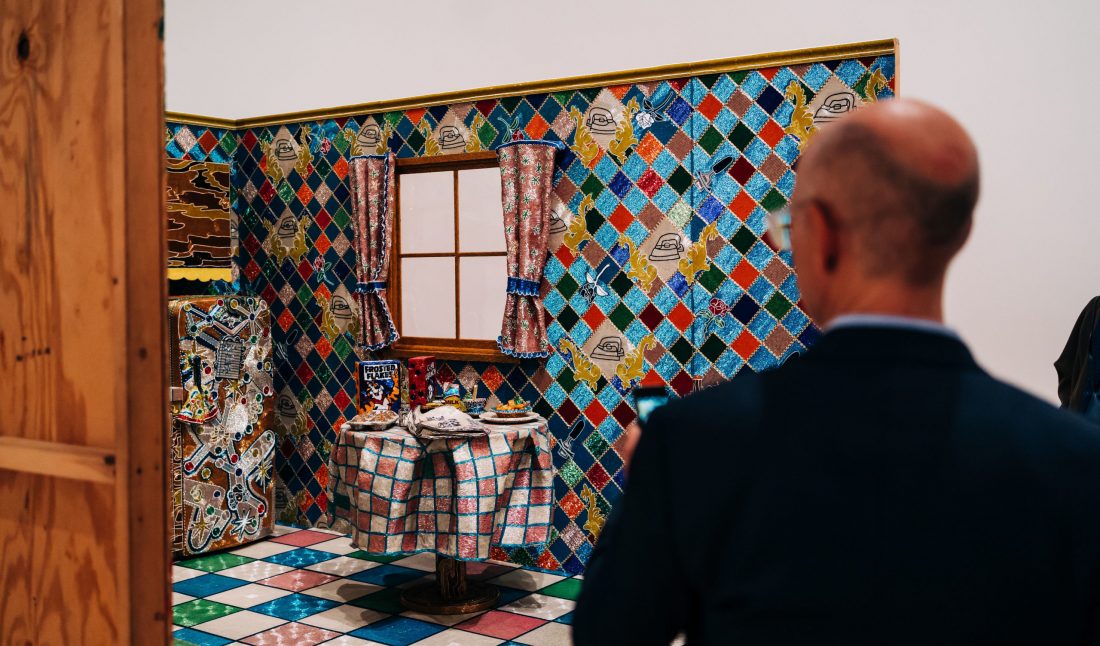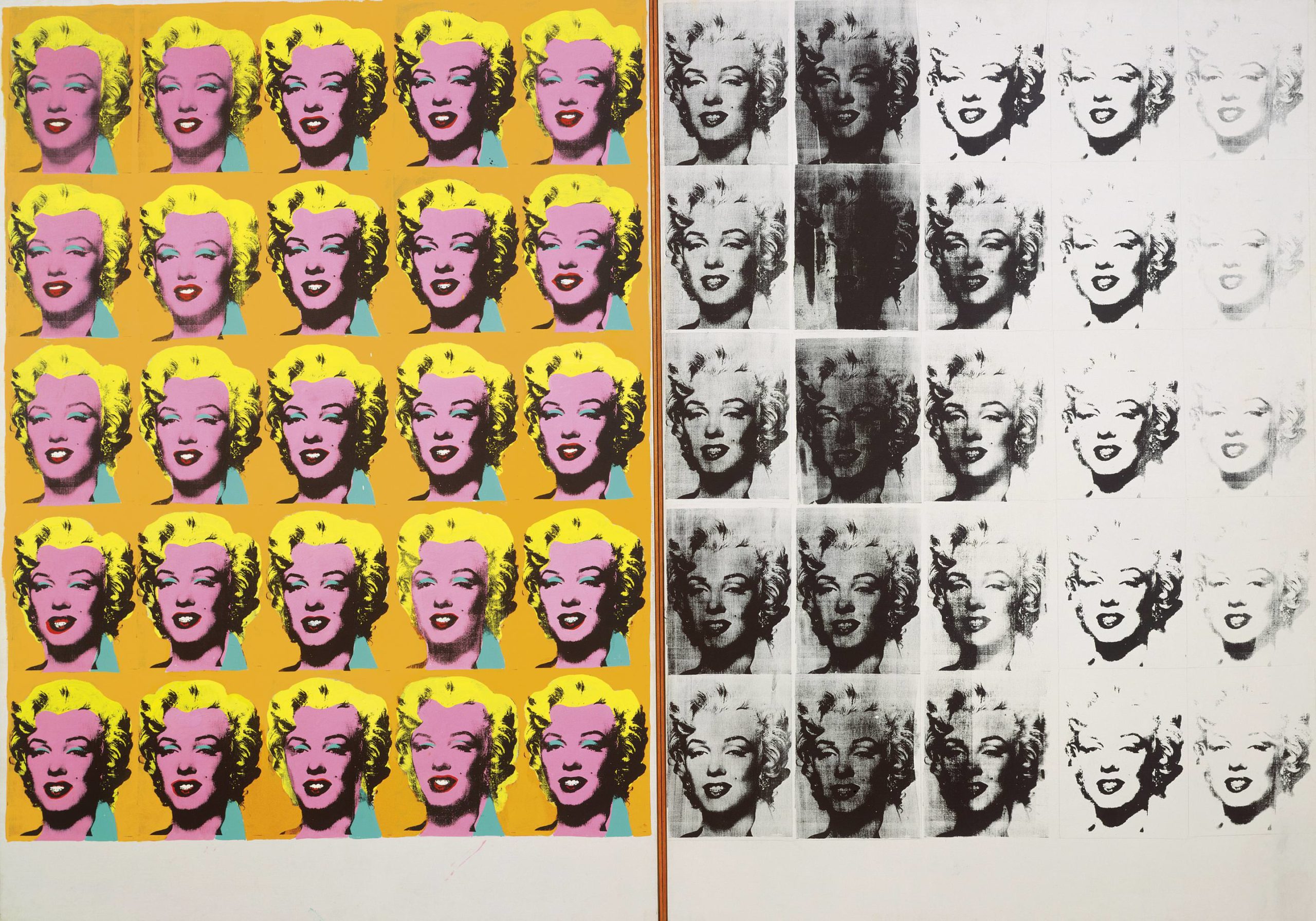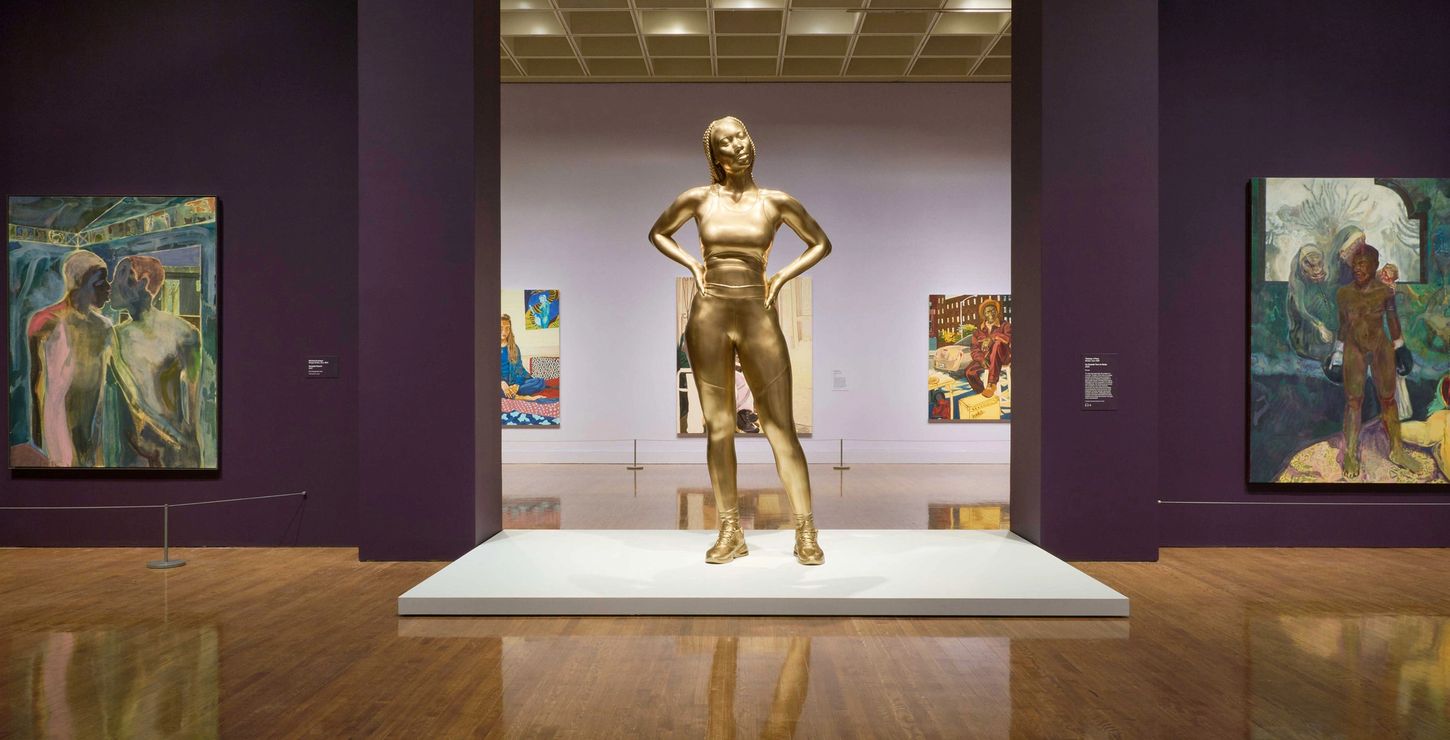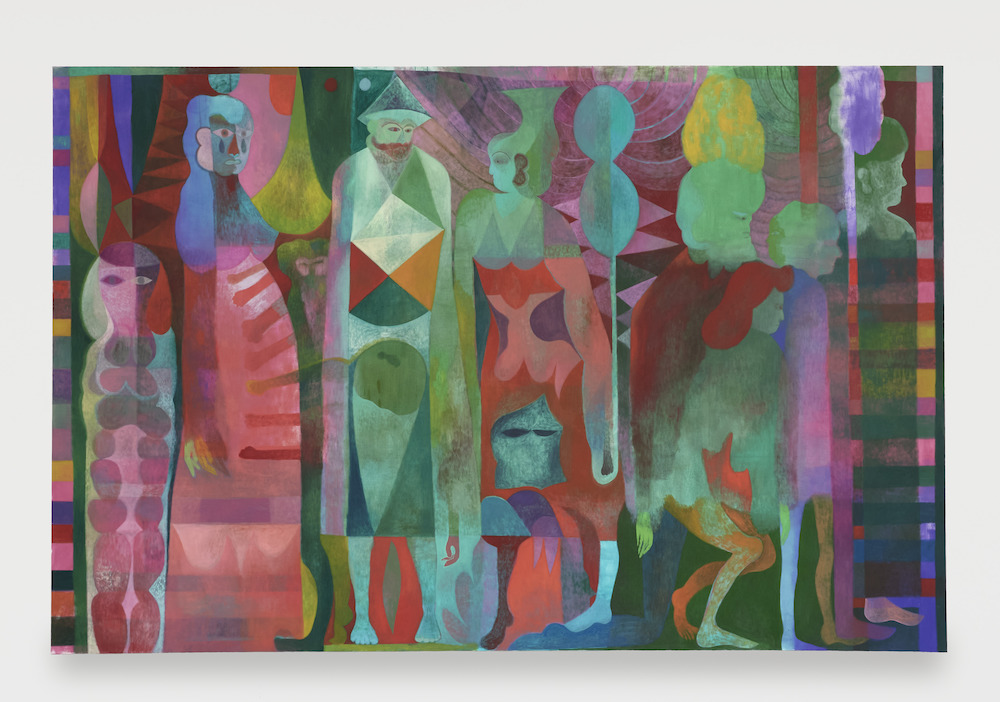On January 16 at The Whitney Museum of American Art, a select group of art patrons gathered for an after-hours tour of “Making Knowing: Craft in Art, 1950–2019.” The exhibition’s curators, Jennie Goldstein and Elisabeth Sherman, were there to guide guests through the various installations and highlight the importance of craft created from the 1950s to today.
Seen in the space were striking works—by artists like Liza Lou, Pepón Osorio, Rosie Lee Tompkins, Simone Leigh, Marie Watt, Charles LeDray, Mike Kelley, and Robert Rauschenberg—that explores various materials and methods of craft. Among contemporary and decorative works were pieces created by historic craft techniques, like beading, weaving, pottery, and quilting.
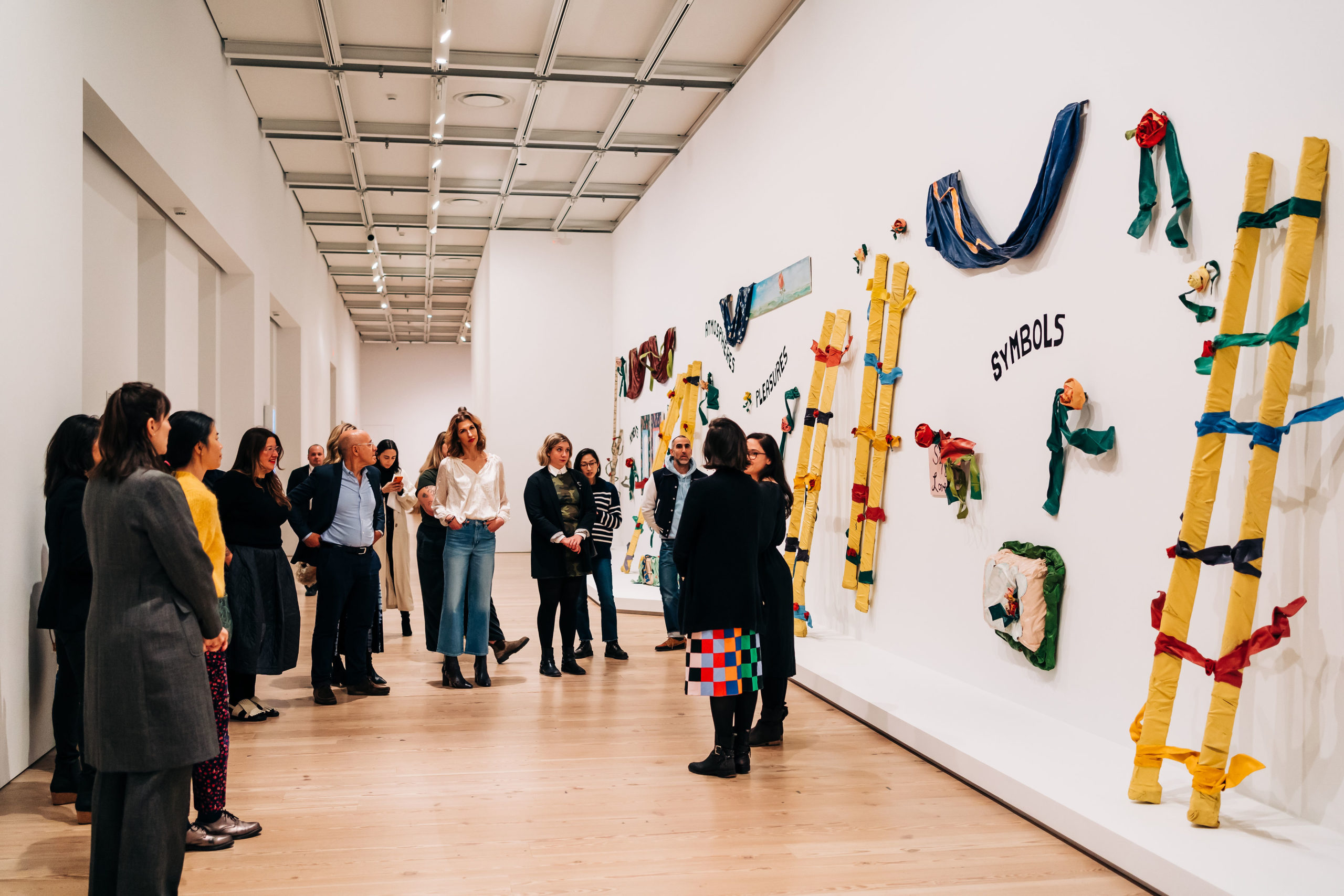 Photo by Yumi Matsuo.
Photo by Yumi Matsuo.Courtesy of The Whitney Museum of American Art and Lingua Franca.
Special for the invitees that night, as well, was a walkthrough of the Whitney Shop by Rachelle Hruska MacPherson, founder of Lingua Franca. Now available at the store and online is a limited-edition collection of sweaters by Lingua Franca—created in collaboration with Berlin-based sound artist Christine Sun Kim—that celebrates the role of the artist.
Whitewall spoke with the exhibition’s curators and Hruska MacPherson about the impact of craft, what’s not to be missed in the exhibition, and how the new limited-edition collection benefits the museum.
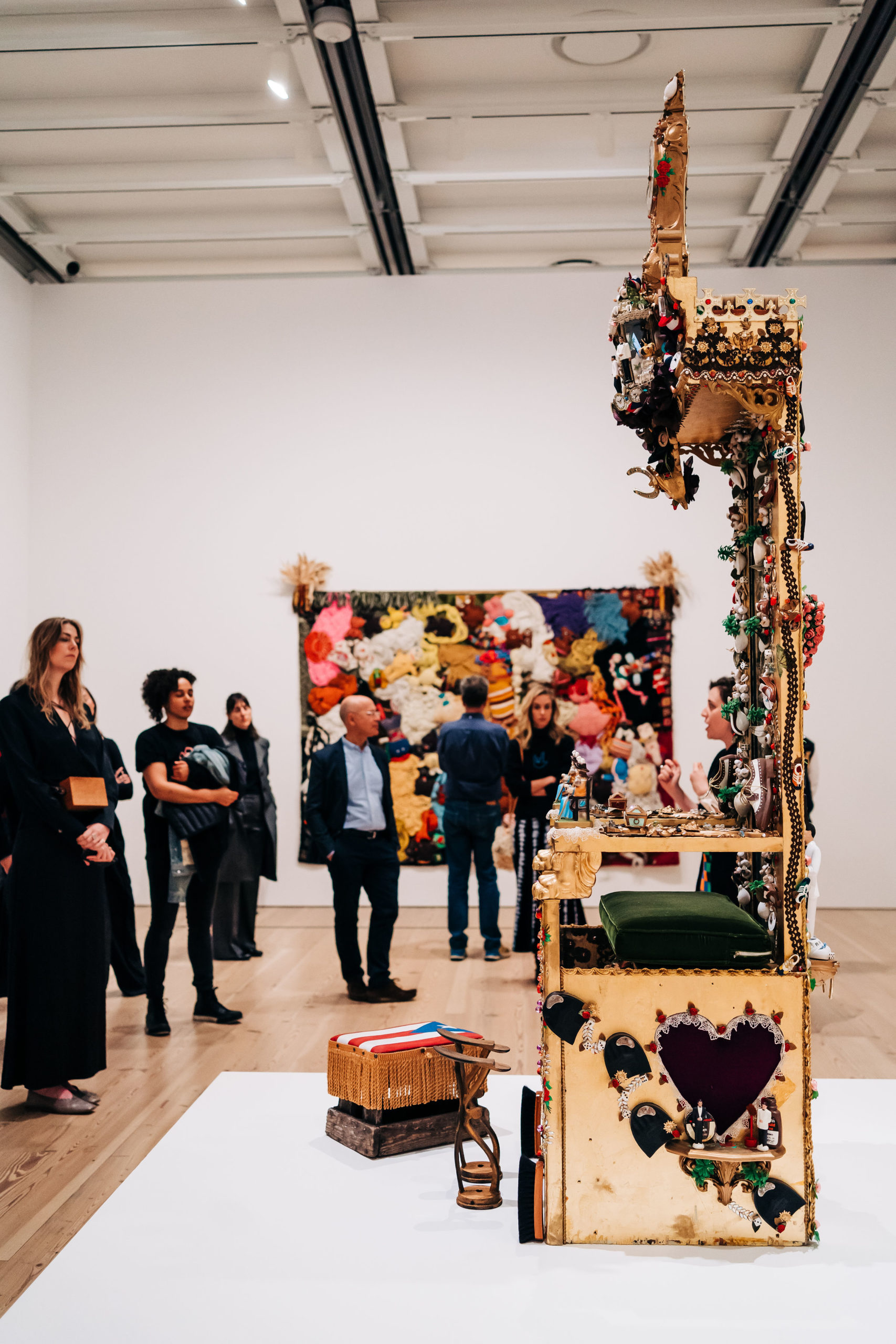 Photo by Yumi Matsuo.
Photo by Yumi Matsuo.Courtesy of The Whitney Museum of American Art and Lingua Franca.
WHITEWALL: Rachelle, can you tell us a bit more about the limited-edition Lingua Franca collection in collaboration with Christine Sun Kim?
RACHELLE HRUSKA MACPHERSON: Christine Sun Kim is an exciting artist who is also part of the permanent collection at the Whitney. She explores many themes through her art, but as a deaf woman, the theme of language across her art is prominent. Language is so incredibly important, and so is the power of our voice. This is an inherent part of Lingua Franca.
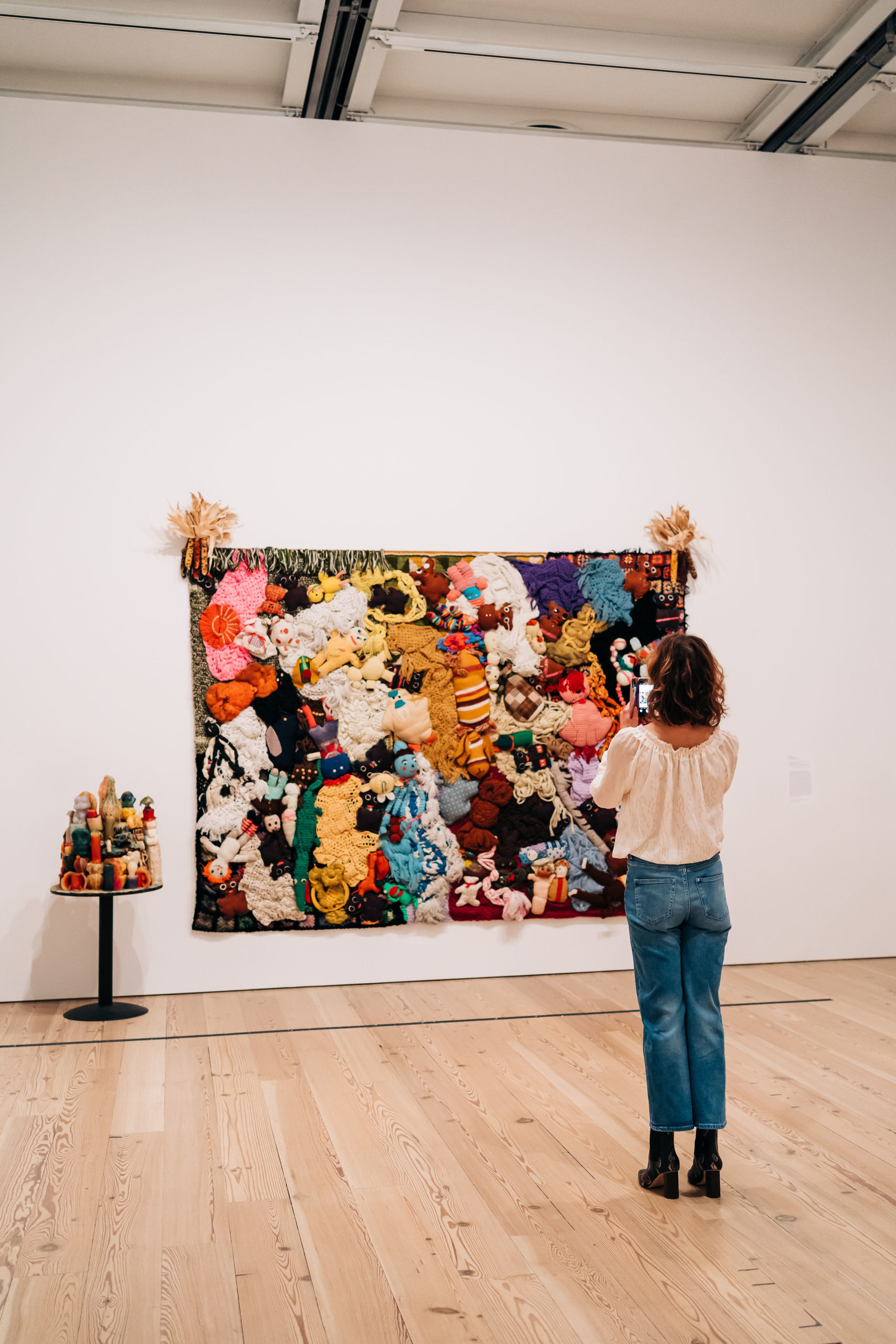 Photo by Yumi Matsuo.
Photo by Yumi Matsuo.Courtesy of The Whitney Museum of American Art and Lingua Franca.
We collaborated together on a series of fair-trade cashmere sweaters and cotton sweatshirts in her handwriting, as well as drawings in American Sign Language. The sweaters were hand embroidered by our team of New York-based embroiderers and are sold exclusively at the Whitney Shop and online as an extension of their craft exhibit.
WW: This is also your fourth collaboration with the Whitney. Can you tell us a bit about what this means for label and the museum?
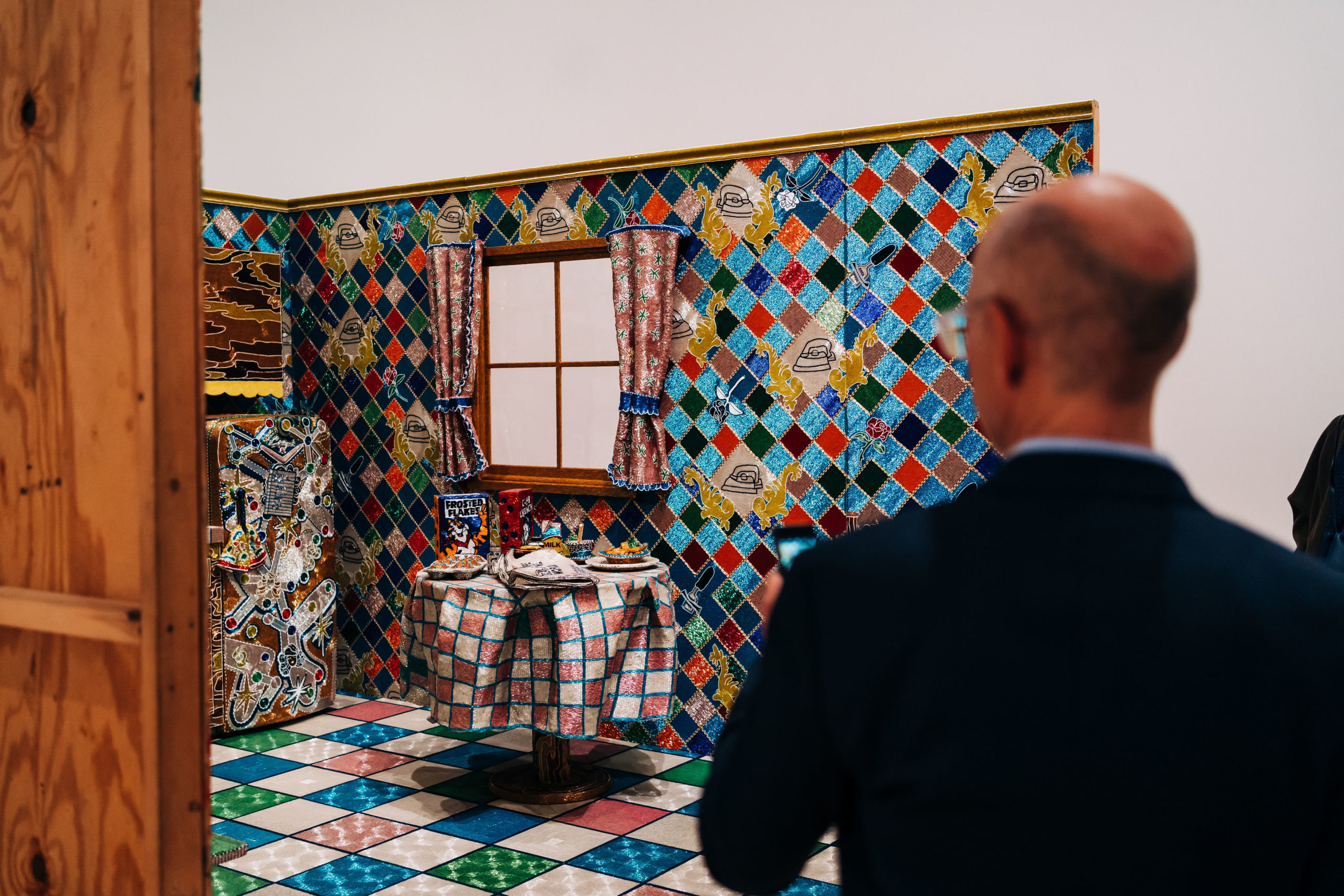 Photo by Yumi Matsuo.
Photo by Yumi Matsuo.Courtesy of The Whitney Museum of American Art and Lingua Franca.
HM: Yes, this is our fourth collaboration with the Whitney, which is a testament to how successful our past collaborations have been. We have raised over $160,000 for the museum supporting their access programs which helps to ensure everyone can enjoy the museum.
WW: Lingua Franca has always embraced craft. Can you tell us a bit about how you aim to prolong craft, through such events like embroidery workshops at your store?
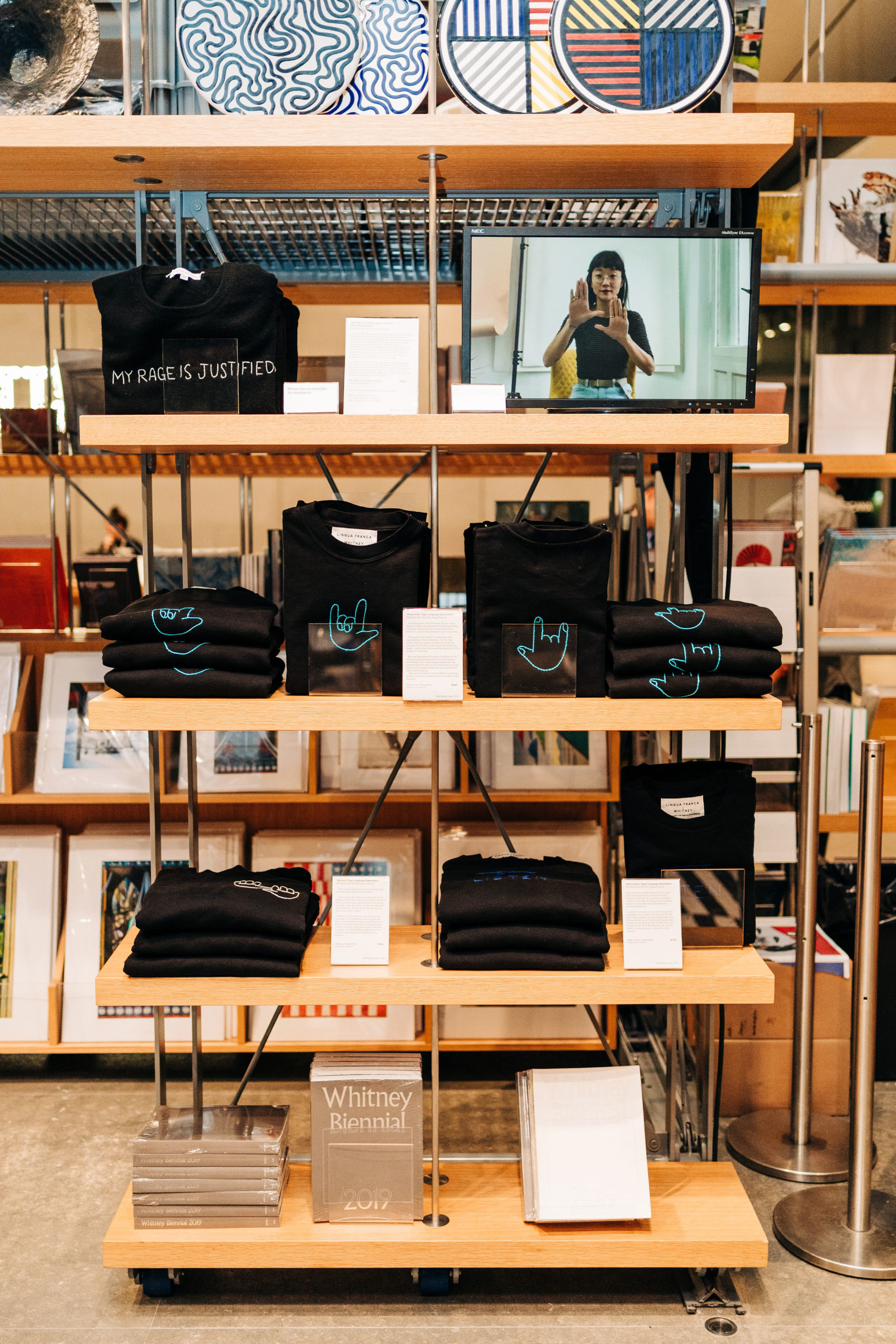 Photo by Yumi Matsuo.
Photo by Yumi Matsuo.Courtesy of The Whitney Museum of American Art and Lingua Franca.
HM: We will be hosting a series of embroidery classes at the Whitney, as well as at our new Madison Avenue flagship. These classes are a fantastic way to teach the art of embroidery and also connect in a meaningful way with our customers. You can check the schedule here.
WW: A big topic for the world lately is how technology is changing culture—from craft and business to communities and connectedness. How do you feel technology is enhancing our relationship with art?
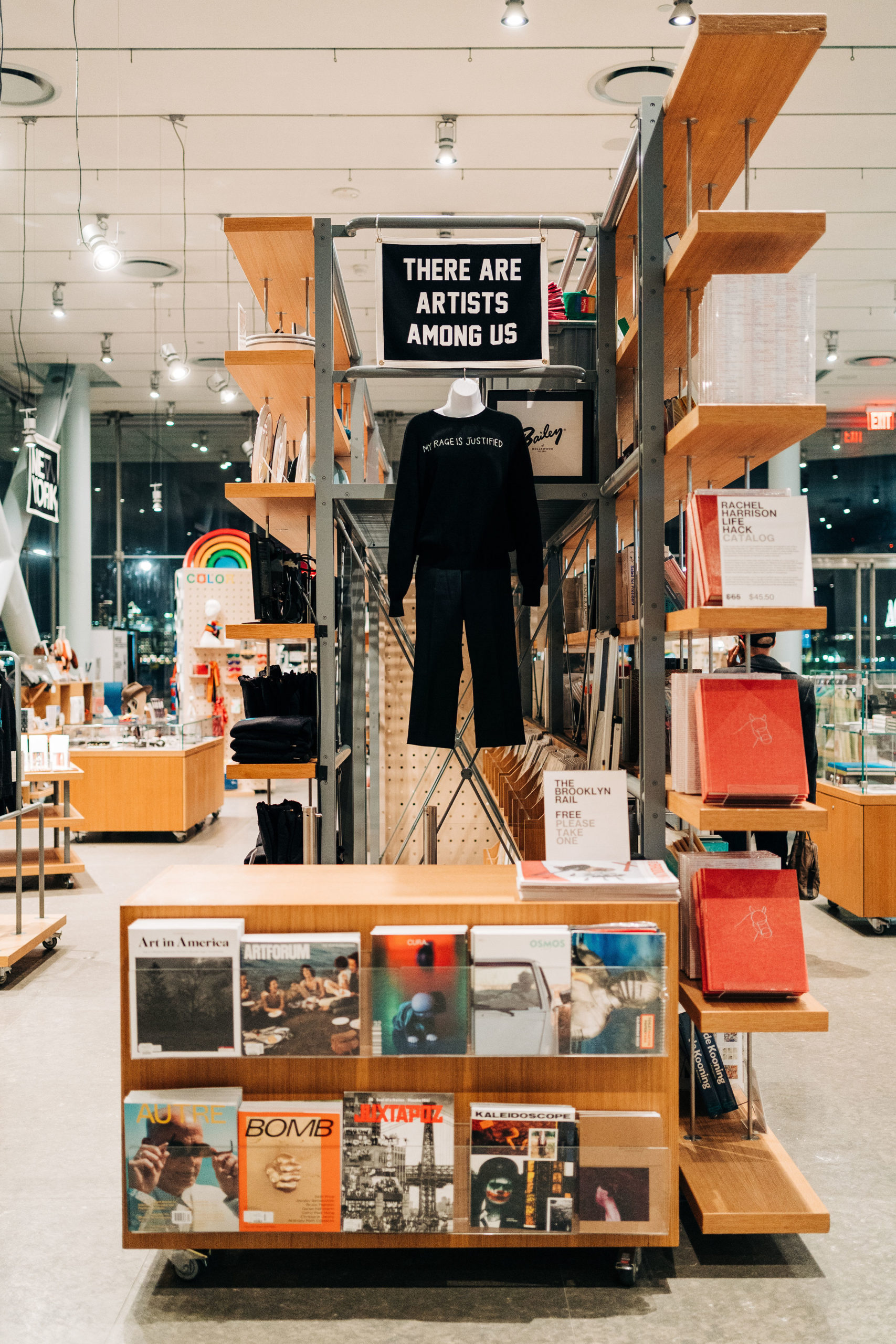 Photo by Yumi Matsuo.
Photo by Yumi Matsuo.Courtesy of The Whitney Museum of American Art and Lingua Franca.
HM: On the negative end, technology is producing feelings of disconnect and anxiety amongst humans. In fact, part of the reason I started embroidering was because I felt that I needed to re-connect with a tactile activity almost as a form of therapy. On the positive end, I have discovered so many artists and creators through my Instagram feed, and we have been able to reach countless people who share our missions through social media. They provide us with inspiration and community.
WW: What do you feel is most special about the new craft exhibition at the Whitney?
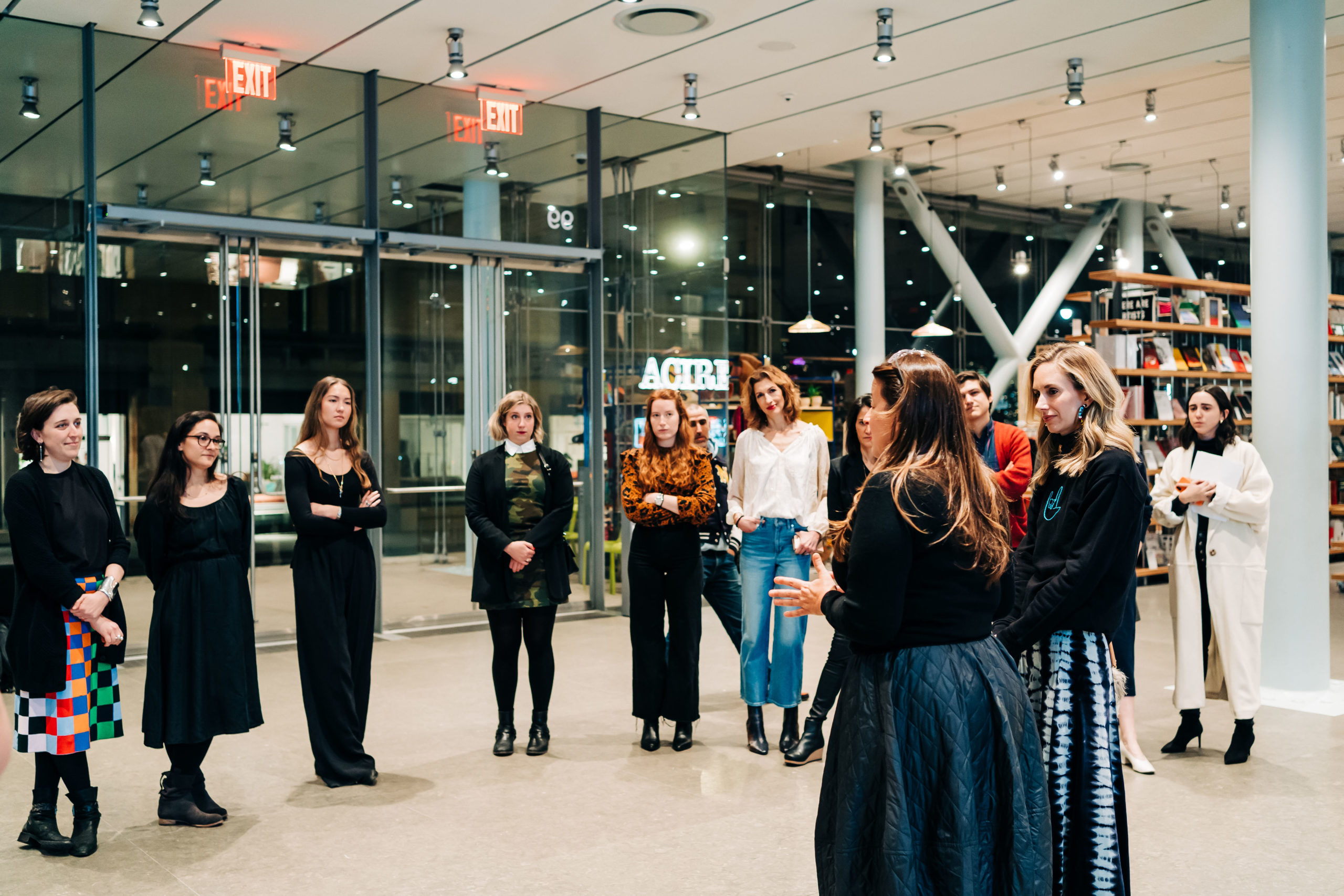 Photo by Yumi Matsuo.
Photo by Yumi Matsuo.Courtesy of The Whitney Museum of American Art and Lingua Franca.
HM: The entire exhibit is a joy to discover, but the beaded kitchen by Liza Lou is the real piece I can’t resist. It took her 5 years to complete it and the level of detail (each little water drop!) is remarkable. As a child of suburban Americana, Mike Kelley’s quilted works also spoke deeply to me. There is absolutely something for everyone.
WW: Jennie and Elisabeth, I’m curious as to how you arrived at curating this exhibition. Can you tell us a bit about your professional background leading up to this point?
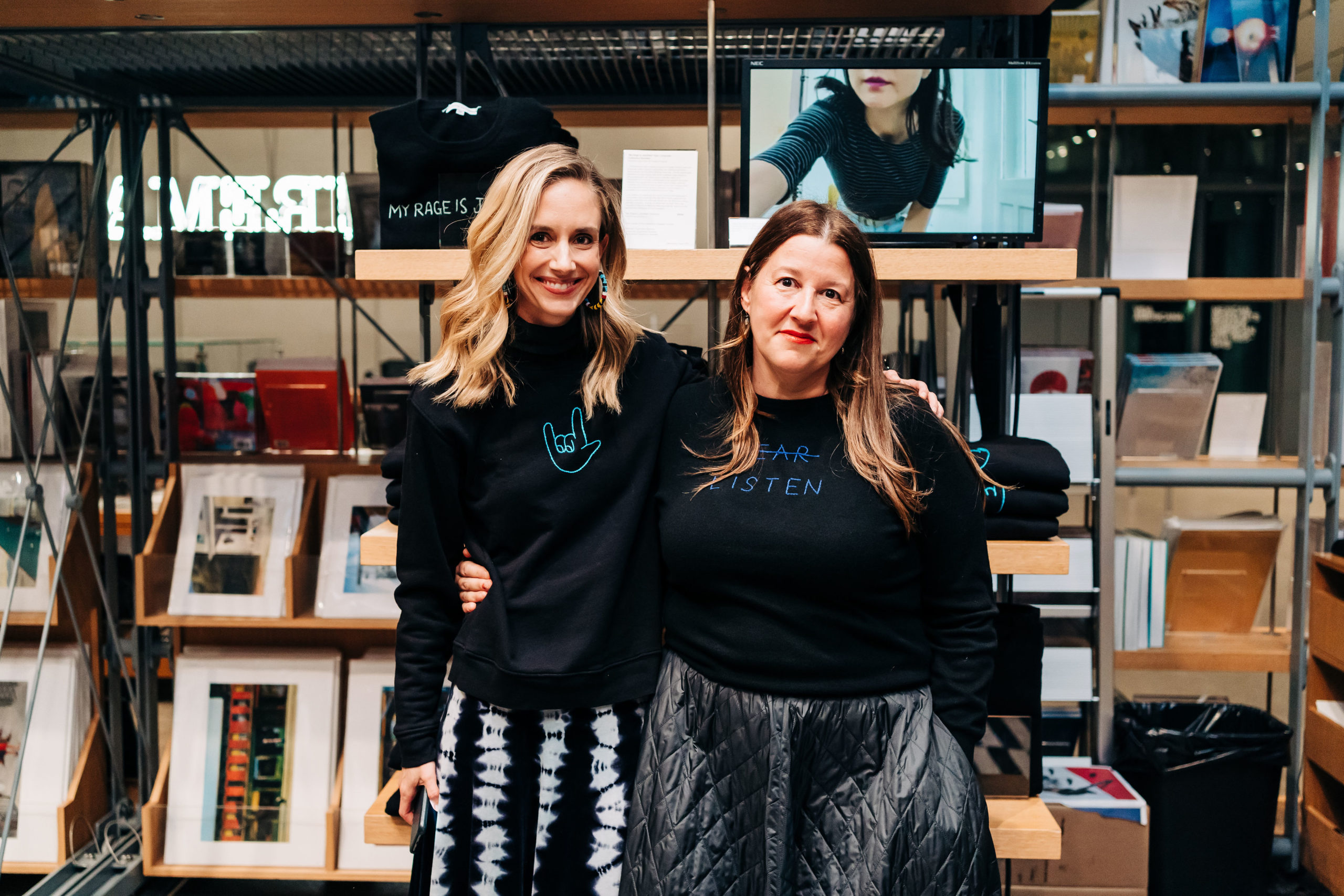 Photo by Yumi Matsuo.
Photo by Yumi Matsuo.Courtesy of The Whitney Museum of American Art and Lingua Franca.
JENNIE GOLDSTEIN: My academic background is in art history, and I pursued curatorial work because it is the best way to combine my interconnected interest in working directly with art, artists, and various publics.
ELISABETH SHERMAN: Similarly, I chose to work in museums after studying art history because of the way in which institutions like the Whitney connect living artists and the important cultural work they do with a wide range of audiences.
WW: Jennie, can you give us your take on the exhibition?
JG & ES: “Making Knowing” features over 80 works by 60 visual artists who have explored the materials, methods, and strategies of craft over the past seven decades. While artists’ reasons for taking up craft range widely, many aim to subvert prevalent standards of so-called fine art, often in direct response to the politics of their time.
WW: Tell us a bit about curating the show. How did you decide which artists and works to exhibit?
JG & ES: This project began around a shared interest in both the topic of craft as well as a desire to install certain works from our collection that haven’t had a chance to be exhibited in the recent past. We had a great time pulling works out of storage we’ve long known of but never seen, as well as learning about many hidden treasures and artists we were less familiar with.
WW: It’s nearly impossible to pick just one installation to highlight, but if you could, what would it be?
JG & ES: While it’s hard to pick just one, of course, Liza Lou’s Kitchen (1991-1996) is a key work for us. Made of millions of beads that Liza hand applied over the course of five years, this life-sized kitchen is a testament to the singular dedication of an artist and her powerful provocation about the value of women’s labor. We were also thrilled to be able to install Ree Morton’s Signs of Love (1976) for all of the ways in which it challenges the definitions of craft while celebrating sentiment, decoration, and all things feminine.
WW: The show focuses on an array of craft. Is there a certain type of craft being made today that you feel may be exhibited in the future?
JG & ES: We expect that the hierarchies that falsely separate “fine art” and “craft” will, like many other hierarchies, continue to be leveled and that the history of craft will increasingly be woven into the telling of the history of art. We also anticipate that young artists will always experiment with materials, and that the freedom we’re seeing today for artists to use techniques traditionally associated with craft will only increase.






